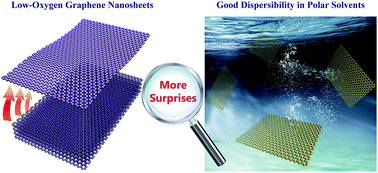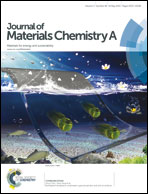Significant advantages of low-oxygen graphene nanosheets†
Abstract
There is a critical need for a practical all-solution approach to bulk-scale graphene materials, which is of great advantage for both fundamental studies and potential applications. Here we report a facile route to low-oxygen graphene nanosheets (GNs) by slight oxidation of graphite in concentrated perchloric acid. The resultant GNs can be dispersed in most polar solvents with concentrations from 2 to 20 g L−1. The good dispersibility of GNs favors investigation of their chemical properties and fabrication of transparent conductive films and high-rate supercapacitors via all-solution approaches. Compared to GO counterparts, the GN suspensions are less sensitive to the pH value and electrolyte concentration, and maintain better stability and dispersibility even after the hydrothermal reaction and hydrazine reduction. The GN film after annealing has a conductivity of as high as 1488 S cm−1, and the bandgap of GNs can be effectively opened even at low oxidation levels. Supercapacitors of GNs deposited on nickel foams allow for operations at a high rate up to 200 V s−1, and possess high capacitance and cycling stability. Our solution processing method offers a suitable way to fabricate conductive GNs with significant advantages, which creates more opportunities for various applications.


 Please wait while we load your content...
Please wait while we load your content...